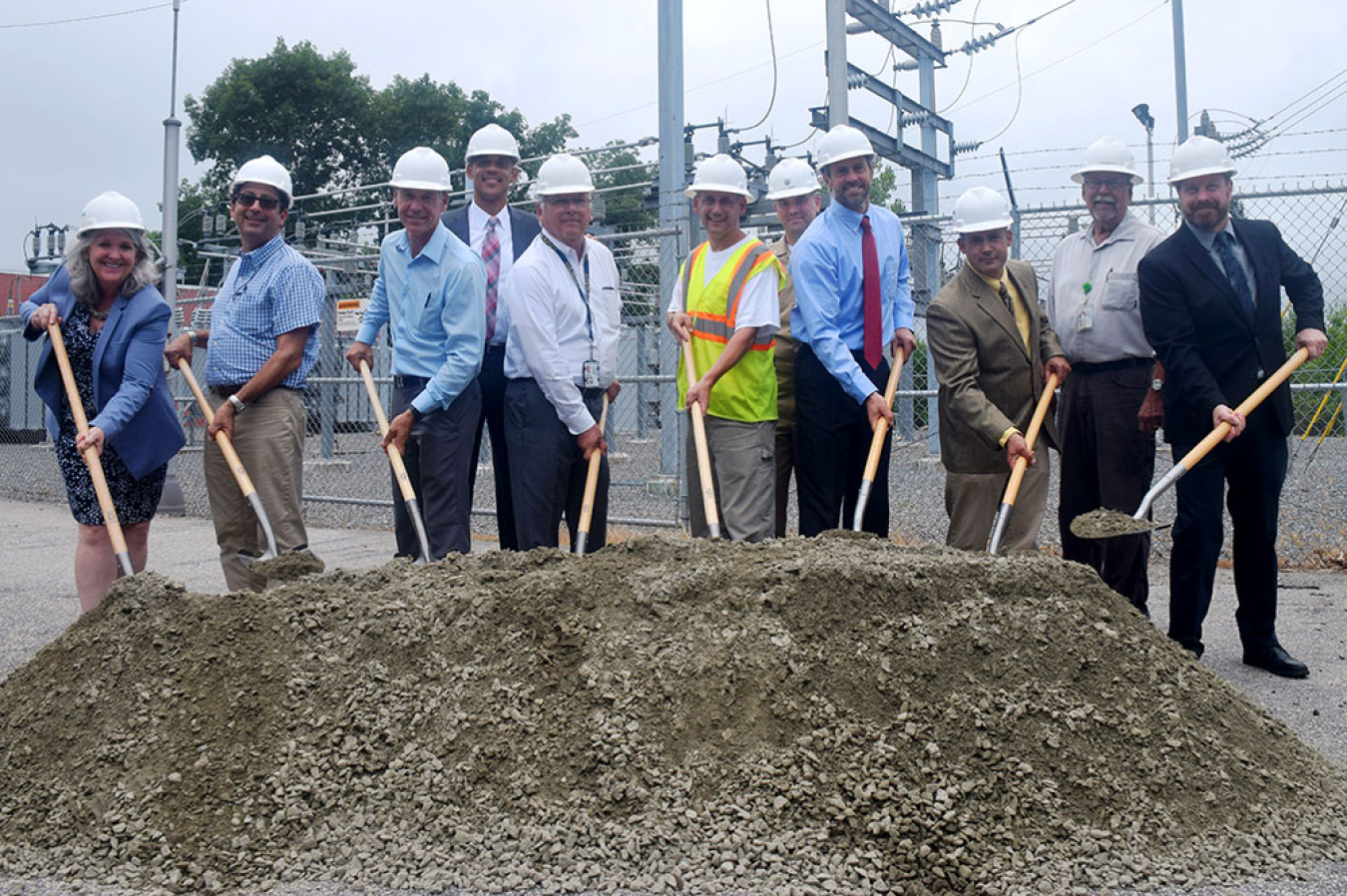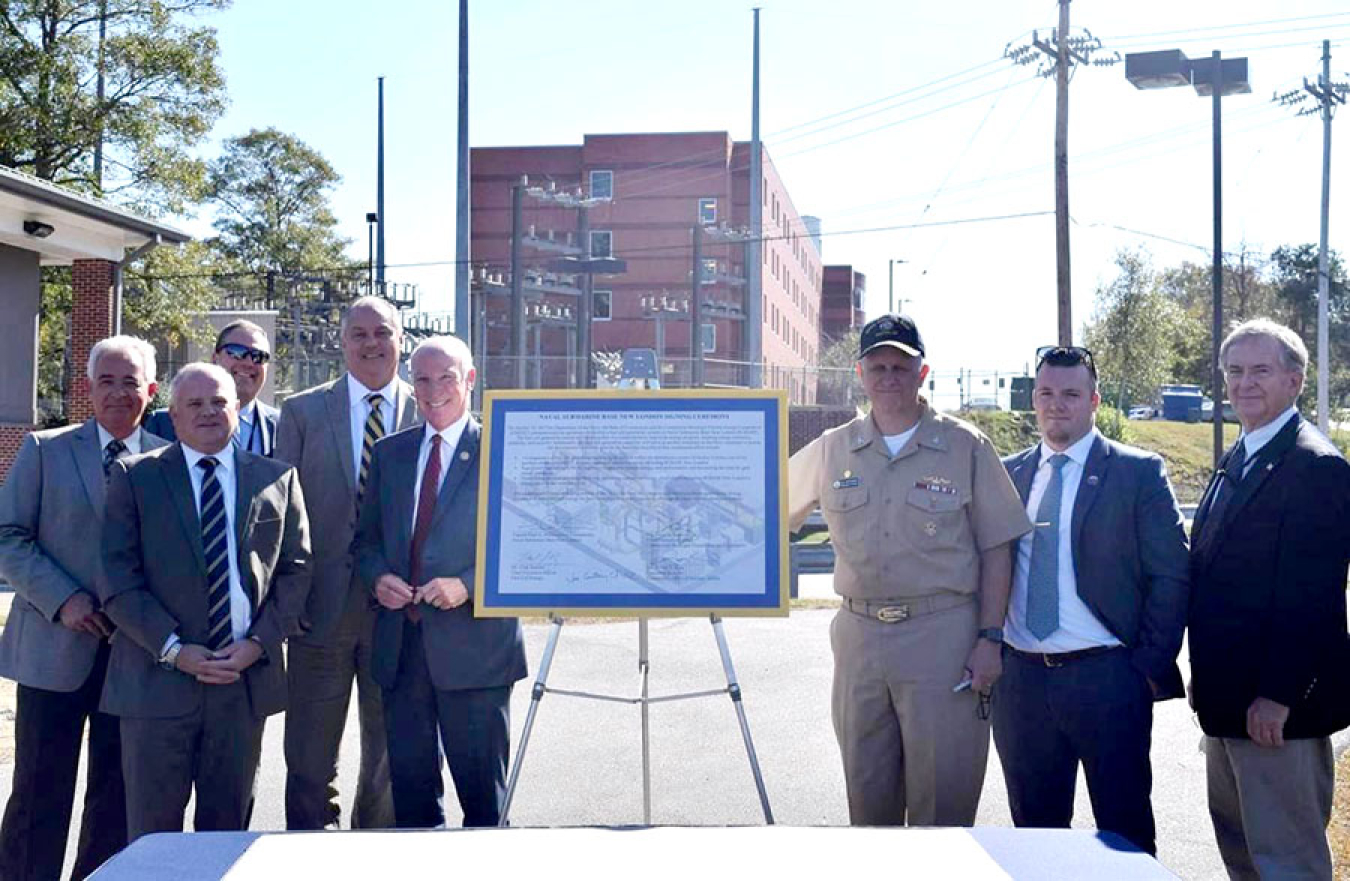
The growth of energy needs at Naval Submarine Base (SUBASE) New London were identified more than a decade ago with the base’s energy vulnerability impacting its future existence and operations. With much at stake, the SUBASE New London staff developed a plan to enhance energy security and align U.S. Department of the Navy resources and efforts. Programs collectively aligned included a pending State of Connecticut Microgrid Grant Program, third-party energy financing, Connecticut Municipal Electric Energy Cooperative (CMEEC) in-kind considerations, and an auxiliary power purchase agreement (PPA) pairing highly efficient fuel cells with an advanced microgrid system. The culmination of this successful collaboration is a 2017 lease modification for a 7.4-MW AC natural gas fuel cell generation resource.
While some elements of the initiative date back to 2009, CMEEC approached the DON in 2016 requesting a lease modification that would allow the base to install fuel cells rather than diesel generators at its existing enhanced-use lease (EUL) site. CMEEC outlined that the modification would increase the project’s viability and bring in additional funding sources. In 2017, the Navy and CMEEC signed the lease modification allowing for a natural gas fuel cell system and leasing approximately one acre of land at SUBASE New London to CMEEC to develop a locally manufactured fuel cell generation system. The energy generated by the fuel cell will be used by Groton Utilities to meet customers’ needs—including SUBASE New London.

In exchange for the land use, CMEEC agreed to provide SUBASE New London with legal right of access to backup power from the fuel cells during grid outages and Supervisory Control and Data Acquisition control capabilities for one building at SUBASE New London during utility grid outages. The agreement also establishes the initial communication network and can expand using state funds, making it easier to develop a microgrid system and allowing better integration of new and existing on-site power generation.
A significant hurdle SUBASE New London overcame was the inertia of the stalled 2009 Navy-CMEEC EUL. Little progress had been made on that project, and, as the base’s energy vulnerability was specifically mentioned as a liability in 2005, it was necessary to act. To deal with this problem, the Shore Energy team studied alternatives, securing funding as a result and re-evaluating the technology to move forward.
The following lessons were learned during this project.
- Leadership is critical, and the communication chain is both horizontal and vertical. Stakeholders must be brought together to develop and ultimately reach a shared vision—the project leader must be able to communicate the benefits of such a project to all stakeholders.
- Navy and state funding requires integration.
There are currently no plans to replicate this project, but SUBASE New London recommends coordinating with the state and with utilities providers to make installations more resilient. Also, as evidenced through this effort, SUBASE New London notes that parties must be willing to change the original project plan to leverage those advantages offered by the partnerships.

